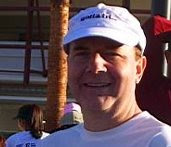My Take on the TSA
At home, in prepping for my trip, I of course took the usual precautions of leaving sharp, pointed scissors at home; I ensured any small (non-explosive) liquids were in acceptable size containers; and near to my heart, I left my Swiss Army knife so it would not be confiscated.
At the home airport, when approaching the TSA area, the initial screener greeted me with a smile, accepted, and verified my pass and ID. Next was the area for removing shoes and putting all items in the large plastic bins. As those items were screened, I was prompted to walk through a metal detector. No beeps. I was thanked by the agent and I was allowed to gather up my items and move on to my gate.
A few days later at the distant end airport, in line again to come home, the procedure was a little different, but I still feel I was respectfully spoken to and guided through the procedures so no uncertainty came to mind to make me uncomfortable. They did however have a body scanner and I was impressed how they orchestrated the scan and a quick secondary check. Here is how it went:
After walking through the metal scanner, an agent prompted me to approach a few steps forward and place my feet on top of a platform plate with two foot shaped areas. “Okay, we want to do a body scan and I need for you to please place your hands over your head, forming a sort of diamond shape...good. This will take around 10 seconds.”
I waited for about 10 seconds until the agent thanked me and then motioned me to walk a few more steps to another agent. I approached agent #2, paused, and stopped for a moment for them to move. I tactfully asked, “Is everything okay?” I noticed they were looking directly into my eyes, non-aggressively; however I sensed the officer was simply observing me and awaiting some instruction. I stayed calm.
“I’m just waiting for an all clear,” the agent shared. Evidently the screener at the other location checks the scan and then radios his contact, who is standing in front of me, for an all clear or to make a second check. He tilted his head into the shoulder epaulet microphone/speaker and nodded. “Okay, I need to perform a brief search along your left knee and down to your ankle area. Is this okay?”
I slightly shrugged, “Sure.”
He carefully knelt down and searched along the areas he said he would and once done, he also thanked me and motioned me over to my awaiting scanned luggage.
After I got my shoes back on and shouldered my luggage, walking along I noticed nearby a group of about 20 TSA agents circled around having what looked like a quick, on the spot procedure update/Q&A discussion. As I walked passed, probably about 30 feet away in distance, I got a sense that these folks are staying as current, informed, and professional as possible as they and many millions of travelers prepare for this busy holiday season.
A few closing observations, about this whole, recent TSA issue. Here is the way I see it.
The TSA is doing the best job possible, given their dictate to protect all American citizens and foreigners who use US air travel methods. With 65,000 plus agents, not everyone is going to inspect and search in the same style or method. Improvement is an on-going effort. (To me, seeing the TSA group discussing procedures is proof that training is a continual affair, particularly when everyone knows the TSA is being brought under a magnifying glass, often questioned on every and all actions they make as they do their job.) Based on my personal experience with other countries’ security methods, replete with visibly armed security forces, German-Shepherds, barbed / Concertina wire check points, one-way mirrored observation areas, and secretive hidden rooms, American travel security is STILL the most open and unobtrusive in the world.
A few quick suggestions:
Prepare ahead for your flight, leaving at home anything that current security inspections may alert to.
If you have children and family, discuss this topic before hand. Everyone needs to understand in the majority of cases, this TSA inspection is not about you. Put in simple terms, the inspections are designed to find any metal and non-metal materials that could be used to harm or destroy an aircraft and its passengers.
Evaluate your attitude, your perspective, and your willingness to see the big picture as to what's going on around you.
A Transportation Security Officer may need to double check and perform a physical check on you. He or she may look directly at you—in the eyes and glance around your face and body. They are looking for subtle signs, involuntary muscle twitches, and body language. They understand you may be nervous. It's my guess many have family too, and in the majority of cases they (and you) will be both looking at a fellow American. That should actually be some consolation.
